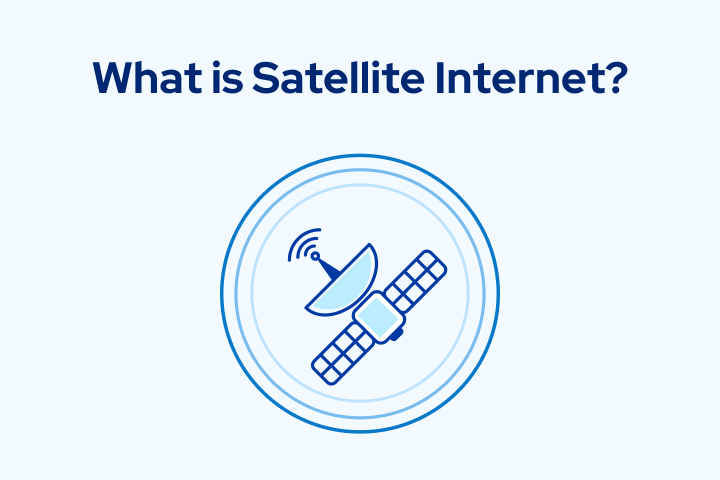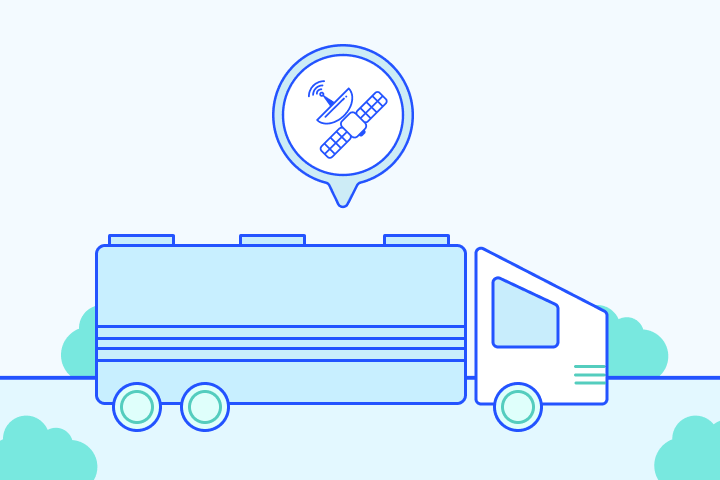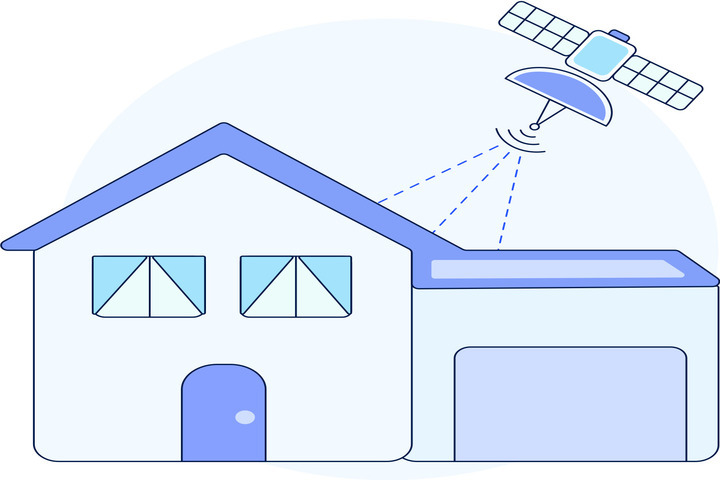What is Satellite Internet & How Does It Work?

HighSpeedOptions prides itself on providing honest, quality content. While we may be compensated when you make a purchase through links on our site, all opinions are our own. Here's how we make money.
Table of Contents
The internet is one of the most impressive advancements of the era, and there’s little wonder why. People worldwide leverage the internet every day for work, entertainment, social connections, and much more. With so many people dependent on the internet, it’s only natural to wonder how it works.
There are many different types of internet connections available, but we’re going to focus on how satellite internet works for this article. Here, we’ll describe the basic steps of how satellite internet works and highlight a few satellite internet service providers (ISP).
What is Satellite Internet?
In short, satellite internet is a wireless internet service that transmits data via satellites orbiting the earth. It’s very different from land-based internet services, like DSL or cable, which transmit data through a complex network of wires and cables. Because it’s the only type of internet service available nationwide, satellite internet is often the only way for many people in rural or remote locations to access the online world. The two largest satellite internet providers within the United States include Viasat and HughesNet. However, Starlink is also an increasing competitor in this space. But more on that later.
Types of Satellite Internet
There are two main types of satellite internet: geostationary orbit (GEO) and low earth orbit (LEO). GEO satellites are located in fixed orbit above the equator at about 22,000 miles above the earth, while LEO satellites are located much closer, only at an altitude of a few hundred miles. LEO satellites offer faster speeds and lower internet latency than GEO satellites, but they also have a shorter range and less coverage than GEO satellites. Due to their proximity to the surface, LEO satellite internet requires a constellation of many satellites to ensure stable coverage.
How Does Satellite Internet Work?
Satellite internet works by transferring information between satellite dishes on the ground and satellites orbiting many miles above the equator. In simple terms, satellites receive and transmit data between a network operations center (NOC) connected to the internet through land-based systems and your home or business.
All downstream and upstream transmissions made from a satellite dish to satellites must flow through the NOC to access the internet. However, this is a simplified explanation, so let’s take a closer look at the five-part satellite relay process.
Internet-Ready Device
An internet-ready device is any device that has the capability of sending and receiving data via the internet, either wirelessly or through a wired connection. There are legion internet-ready devices, such as computers, tablets, smartphones, gaming platforms, smart TVs, smartwatches, and so much more.
Modem/Router
When you utilize an internet-ready device, it sends and receives data through a nearby router or modem. These devices translate data to move between it and an internet connection, such as a satellite dish. Devices can connect to a modem or router via WiFi or via ethernet cables.
While wires can be a bit of a hassle for some people in this typically-wireless age of technology, they can offer a faster, more stable internet connection than WiFi. But wireless connections are much more convenient, as you can access the internet from anywhere within range of your wireless router.
Satellite Dish
The next step for satellite internet connectivity is a satellite dish. These dishes must be precisely oriented to properly beam signals to and from satellites to ensure a strong and stable connection. Typically, certified technicians from an ISP will install your satellite dish to ensure proper placement.
Satellites in Space
Satellites hover above the equator and maintain geosynchronous orbit to ensure that internet signal relays remain consistent. Most internet satellites, such as those launched by Viasat and HughesNet, are currently located hundreds of miles above the earth’s surface. However, Starlink has been launching next-generation satellites into low earth orbit (LEO) over the past several years. These particular satellites are now orbiting the planet at approximately 100 miles above the Earth’s surface.
Network Operations Center (NOC)
Whenever anyone requests information from the internet, the data they request is uploaded through a relay and beamed from a satellite to the NOC. This occurs whether you’re streaming a show on Netflix, following a link attached to an email, or even opening a social media platform like Facebook or Twitter.
The NOC utilizes a substantial satellite dish to send and receive information–a dish much larger than the dish attached to your home. The NOC is a gateway between your satellite connection an internet backbone, and the last step in your overall satellite internet connection.
Because the signal has to travel so far, it’s normal to occasionally experience more lag or latency when using satellite internet than DSL or cable internet. However, technological advancements in satellite internet have drastically reduced latency.
The Best Satellite Internet Providers
If you’re thinking about satellite internet service, you may be wondering which providers to consider. There are two satellite internet providers, Hughesnet and Viasat, that each provide quality service. We’ll explore some of the essential information you’ll want to know about their services below. We’ll also explore the new satellite internet option, Starlink.
HughesNet
HughesNet satellite internet is relatively limited in terms of available plans. Each plan provides the same speeds–25 Mbps download, and 3 Mbps upload – with the only difference being the monthly data allowance or data cap. Their smallest plan includes 15 GB of data for $64.99 per month, while their most extensive plan provides up to 75 GB of data for $159 per month.
Viasat
Viasat internet service offers a wide range of plans. Depending on your needs and lifestyle, one of the unlimited data plans typically is the best solution. While data is unlimited, each plan offers high-speed data up to a certain limit. Once you reach that limit, you still have unlimited data but it will be over a slower connection. Viasat’s most basic unlimited plan is Liberty 12 and includes 12 GB of high-speed data with speeds up to 12 Mbps for only $30 per month. In contrast, their best unlimited plan, the Unlimited Platinum 100, provides users with 150 GB of high-speed data with speeds up to 100 Mbps for $150 per month.
- Fast satellite internet
- Ideal for rural areas
- Up to 3x faster than DSL*
Starlink
Starlink is one of the most expensive satellite providers, but the price may be worth it for those looking for access to high-speed internet options in remote and rural areas. Their standard service carries a monthly cost of $99 and an equipment fee of $499. In contrast, their premium service costs $500 per month and $2,500 for equipment.
Final Facts to Consider
The internet is a remarkable technological advancement that significantly impacts how many people worldwide live their daily lives. Our experts at HighSpeedOptions sincerely hope that the above information has provided you with a better understanding of how satellite internet operates and why it’s so important to people in so many parts of the world.
Contact us today or read through our other internet resources if you’d like access to even more information on how the internet functions and knowledge of the best internet providers you can choose from in your area.
Find providers in your area
Table of Contents








